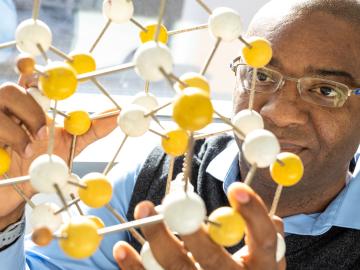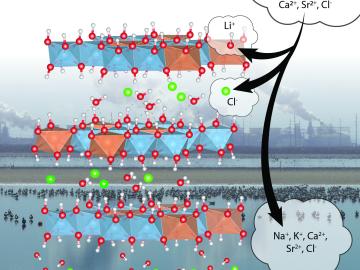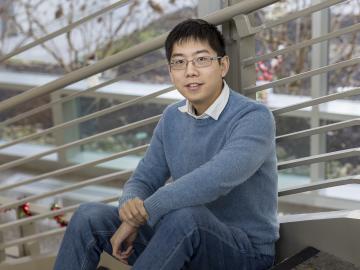
Filter News
Area of Research
- (-) Energy Sciences (1)
- (-) Materials (50)
- Advanced Manufacturing (4)
- Biology and Environment (17)
- Clean Energy (69)
- Climate and Environmental Systems (2)
- Computer Science (2)
- Fusion and Fission (5)
- Fusion Energy (5)
- Isotopes (4)
- Materials for Computing (5)
- National Security (12)
- Neutron Science (27)
- Nuclear Science and Technology (22)
- Nuclear Systems Modeling, Simulation and Validation (2)
- Quantum information Science (3)
- Supercomputing (38)
News Topics
- 3-D Printing/Advanced Manufacturing (4)
- Advanced Reactors (1)
- Artificial Intelligence (2)
- Big Data (2)
- Bioenergy (3)
- Biomedical (1)
- Chemical Sciences (2)
- Climate Change (1)
- Computer Science (8)
- Coronavirus (1)
- Critical Materials (2)
- Cybersecurity (1)
- Energy Storage (9)
- Environment (3)
- Exascale Computing (1)
- Isotopes (1)
- Machine Learning (3)
- Materials (1)
- Materials Science (30)
- Mathematics (1)
- Microscopy (5)
- Molten Salt (1)
- Nanotechnology (12)
- National Security (1)
- Neutron Science (10)
- Nuclear Energy (3)
- Physics (8)
- Polymers (4)
- Quantum Science (4)
- Security (1)
- Summit (2)
- Sustainable Energy (5)
- Transformational Challenge Reactor (2)
- Transportation (3)
Media Contacts

Valentino (“Tino”) Cooper of the Department of Energy’s Oak Ridge National Laboratory uses theory, modeling and computation to improve fundamental understanding of advanced materials for next-generation energy and information technologies.

OAK RIDGE, Tenn., Feb. 12, 2020 -- Michael Brady, a researcher at the Department of Energy’s Oak Ridge National Laboratory, has been named fellow of the National Association of Corrosion Engineers, or NACE International.

Energy storage startup SPARKZ Inc. has exclusively licensed five battery technologies from the Department of Energy’s Oak Ridge National Laboratory designed to eliminate cobalt metal in lithium-ion batteries. The advancement is aimed at accelerating the production of electric vehicles and energy storage solutions for the power grid.

An international team of researchers has discovered the hydrogen atoms in a metal hydride material are much more tightly spaced than had been predicted for decades — a feature that could possibly facilitate superconductivity at or near room temperature and pressure.

The formation of lithium dendrites is still a mystery, but materials engineers study the conditions that enable dendrites and how to stop them.

Rigoberto “Gobet” Advincula has been named Governor’s Chair of Advanced and Nanostructured Materials at Oak Ridge National Laboratory and the University of Tennessee.

Liam Collins was drawn to study physics to understand “hidden things” and honed his expertise in microscopy so that he could bring them to light.

In the quest for domestic sources of lithium to meet growing demand for battery production, scientists at ORNL are advancing a sorbent that can be used to more efficiently recover the material from brine wastes at geothermal power plants.

Scientists at have experimentally demonstrated a novel cryogenic, or low temperature, memory cell circuit design based on coupled arrays of Josephson junctions, a technology that may be faster and more energy efficient than existing memory devices.

Eugene P. Wigner Fellow Victor Fung’s story is proof that a series of positive experiences around science and happy accidents can lead to a rewarding research career. He joined ORNL in 2019.


